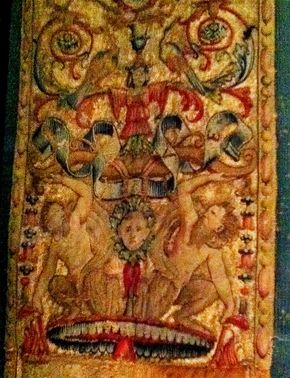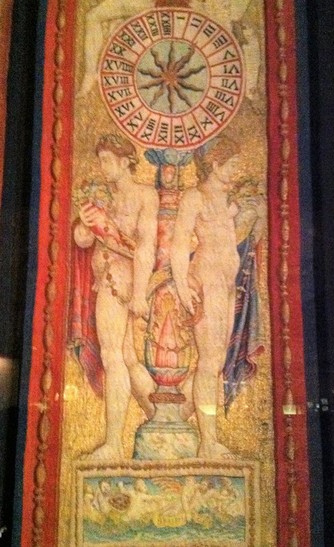
The second phase was to sort all the needed colored wires and to organize them in families of colors.
Thirdly the weaving of the rimming and finally the in weave of the design.
The loom could be vertical or horizontal.
The vertical loom allowed freedom of interpretation: the carton was placed next to it and could be interpreted by the weaver, vertical loom not allowed precision.
Horizontal loom had the carton placed below and allowed to copy the model exactly creating a mirror copy of the painting.
Horizontal loom was favored for exclusive commissions.
The weavers worked one next to the other on section of about 1m, or half a meter if gold treat was used.

A main difference between weaving fabric and tapestry is that the wire makes one line at the time in fabric while in tapestry sections are wowen to finish a detail using a specific color.
This means that different colored sections were joined by knots or stitched to avoid noticing the broken profile.
After the tapestry was disassembled from the loom the wrap wires were cut and the tapestry was combed and brushed.



